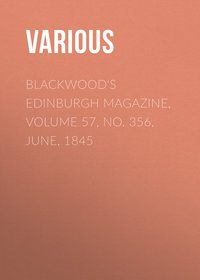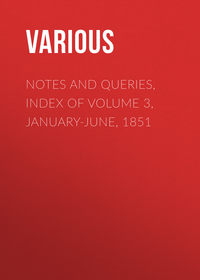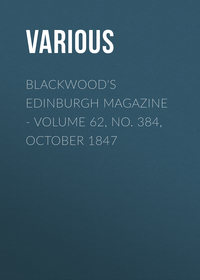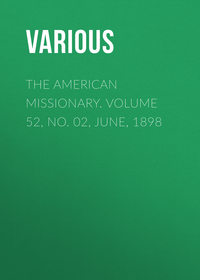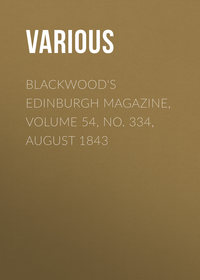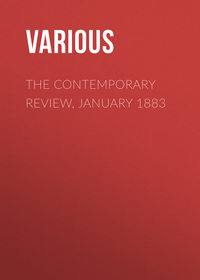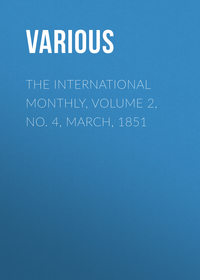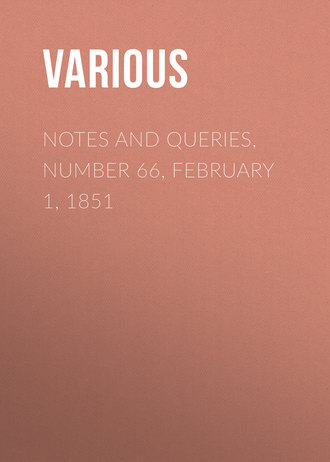 полная версия
полная версияNotes and Queries, Number 66, February 1, 1851
Throughout the various documents relating to this church, which are preserved in Dugdale's Monasticon, vol. iii. pp. 219-255, Savoy edition, the cathedral is generally styled the church of St. Mary and St. Chad. And again, on a recently discovered seal of the dean and chapter, engraved some two hundred years after Stephen's reign, the inscription is this:
"S' DECANI ET CAPL'I ECCLE'IE SCE MARIE ET SCI CEDDE LYCHFELD' AD CAS."4
But in a grant from King Stephen to Bishop Roger de Clinton, who commenced the present fabric, it is simply styled ecclesia Sancti Ceddæ de Lichfield; and in the year 1341 a document was addressed Decano et Capitulo ecclesiæ Sancti Ceddæ Lych', as may be learned from the Fœdera, vol. ii. p. 2.
We thus perceive, that the original name of Lichfield Cathedral has been dropped for centuries, and so has that of the church which Bishop Chad built in honour of the Virgin Mary at Stow; for this Church has, for a long time, been known only by the name of Stow Church, or by that of St. Chad's, Stow.
And in this manner, I fancy, may be reconciled the different names of Saviour's, or St. Saviour's, Canterbury, and St. Martin's, Canterbury; both alluding to the same church, THE MOTHER CHURCH of Saxon England.
J. Rawson, M.D.Lichfield.
Replies to Minor Queries
The Frozen Horn (Vol. ii., p. 262.; Vol. iii., p. 25.).—In an old edition of Hudibras now before me, I find the following note on the lines quoted by J. M. G.:—
"Some report that in Nova Zembla and Greenland men's words are wont to be frozen in the air, and at the thaw may be heard."
The application of the idea by Charles Dickens, in his Old Curiosity Shop, is also, I think, extremely felicitous.
"'Don't be frightened, mistress,' said Quilp, after a pause. 'Your son knows me: I don't eat babies; I don't like 'em. It will be as well to stop that young screamer though, in case I should be tempted to do him a mischief. Holloa, Sir! will you be quiet?' Little Jacob stemmed the course of two tears which he was squeezing out of his eyes, and instantly subsided into a silent horror.... The moment their [Quilp and Swiveller] backs were turned, little Jacob thawed, and resumed his crying from the point where Quilp had frozen him."—Vol. i. pp. 207-9.
J. B. Colman.To Pose.—In Vol. ii., p. 522., your correspondent F. R. A. points out some passages in which the word "posing" appears to be used in a sense equivalent to "parsing." Neither the etymology nor the exact meaning of the word "to pose," are easy to determine. It seems to be abbreviated from the old verb "to appose;" which meant, to set a task, to subject to an examination or interrogatory; and hence to perplex, to embarrass, to puzzle. The latter is the common meaning of the word to pose; thus in Crabbe's Parish Register:—
"Then by what name th' unwelcome guest to call,Was long a question, and it posed them all."Hence, too, the common expression, that a question which it is difficult to answer, or an argument which seems to decide the controversy, is a poser. The word "posing" in the passages cited by F. R. A. may refer to the examination of the pupil by the teacher of grammar. Thus, Fuller, in his Worthies, art. Norfolk, says that—
"The University appointed Dr. Cranmer, afterwards Archbishop of Canterbury, to be the poser-general of all candidates in divinity."
Roquefort, Gloss. de la Langue Romaine, has "apponer, appliquer, poser, plaier." See Richardson in appose and pose.
L.Culprits torn by Horses (Vol. ii., p. 480.).—In reply to Mr. Jackson's question respecting culprits torn by horses, I beg to inform him that Robert François Damiens was the last criminal thus executed in France. He suffered on the 28th March, 1757, for an attempt on the life of Louis XV. The awful penalty of the law was carried out in complete conformity with the savage precedents of former centuries. Not one of the preparatory barbarities of question, ordinary and extraordinary, or of the accompanying atrocities of red-hot pincers, melted lead, and boiling oil, was omitted. The agony of the wretched man lasted for an hour and a half, and was witnessed, as Mercier informs us, by all the best company in Paris.
The men amused their leisure with cards, while waiting, as he says, for the boiling oil; and the women were the last to turn their eyes from the hideous spectacle. Your correspondent may be glad to be informed that the same punishment was inflicted on Poltrot de Méré for the murder of the Duke of Guise, in 1563; on Salcède, in 1582, for conspiring against the Duke of Alençon; on Brilland, in 1588, for poisoning the Prince de Condé; on Bourgoing, Prior of the Jacobins, as an accessory to the crime of Jaques Clément, in 1590; and on Ravaillac, for the murder of Henry IV. in 1610. These, with the case of Jean Chastel, are all of which I am aware. If any of your readers can add to the list, I shall feel obliged.
As I am upon the subject of judicial horrors, I would ask, whether any of your correspondents can supply me with a reference to the case of a woman executed, I think in Paris, and, if my recollection serves, for a systematic series of infanticides.
She was put to death by being suspended over a fire in an iron cage, in which a number of wild cats were shut up with her.
I read the story many years ago, and for some time have been vainly endeavouring to recover it.
J. S.Torn by Horses (Vol. ii., p. 522.).—This cruel mode of execution was practised both in antiquity and the middle ages. Livy, speaking of Tullus Hostilius, says:—
"Exinde, duabus admotis quadrigis, in currus earum distentum illigat Mettum; deinde in diversum iter equi concitati, lacerum in utroque curru corpus, qua inhæserant vinculis membra, portantes. Avertere omnes a tantâ fœdidate spectaculi oculos."—L. i., c. 28.
Livy adds, that this was the first and last example of so savage a punishment among the Romans. The punishment, however, must have been well-known in antiquity, as it is alluded to by Seneca among the tortures which accompanied death.
"Cogita hoc loco carcerem, et cruces, et equleos, et uncum; et adactum per medium hominem, qui per os emergat, stipitem; et distracta in diversum actis curribus membra."—Epist. xiv. 4.
Grimm (Deutsche Rechtsalterthümer, p. 692.) quotes the following instance of this punishment from Gregory of Tours, Hist. France, iii. 7.:
"Puellas crudelinece interfecerunt ita ut ligatis brachiis super equorum cervicibus, ipsique acerrimo moti stimulo per diversa petentes diversas in partes feminas diviserunt"
He adds that it occurs frequently in the legends of the Carolingian period. Thus Turpin, c. 26., describes as follows the punishment of the traitor Gannalon:—
"Jussit illum Carolus quatuor equis ferocissimis totius exercitus alligari, et super eos quatuor sessores agitantes contra quatuor plagas cœli, et sic dignâ morte discerptus interiit."
Almost all cruel punishments have been used in the East, and it is not improbable that execution by means of horses may be mentioned in some oriental narrative.
L.The Conquest (Vol. ii., p. 440.).—In Cambria Triumphans, by Percy Enderbie, at p. 283, will be found a copy of a deed, the conclusion of which runs thus:—
"Sigilla nostra apposuimus in Castro nostro de Burgavenny vicessimo secundo die Julii, anno regni Regis Henrici sexti, post Conquestum vicessimo septimo."
The word is here used for the accession of the King.
S. K.Mayors—their correct Prefix (Vol. i., p. 380.).—Since propounding my Query in Vol. i., p. 380., relative to this subject, I have to inform your readers, that I have been favoured with the opinion of gentlemen very high in official authority on all points connected with heraldry and the rules of precedence; which is, that the proper style of the mayor of a borough is "the worshipful;" and they are further of opinion, that there can be no ground for styling the mayor of a city "the right worshipful."
J.True Blue (Vol. iii., p. 27.).—On the origin of this expression, I must claim the right to dissent from your correspondent G. F. G., who appears to have fallen into the error of confining a form of very wide application to one particular case, in which he discovers a trifling coincidence of fact. The connexion of the colour blue with truth is of very ancient date, of which the following may for the present suffice as an example:—
"And by hire beddes hed she made a mewAnd covered it with velouettes blew,In signe of trouth, that is in woman sene."Chaucer, Squiere's Tale.Blue, in the early practice of the tinctorial art, appears to have been the most humble of the colours in use, and the least affected by any external influence; and, down to the present day, if certain tints of recent invention be excepted, the same character may be claimed for it. What then more natural, than that it should be taken as the type of immutability, or that every party, political or religious, should in turn assume it as the badge of honesty of purpose, and of firm adherence to their principles?
F. S. Q.Modum Promissionis (Vol. ii., pp. 279, 347, 468.).—This phrase is perhaps connected with the promissivus modus, i.e. tempus promissivum or futurum of Diomedes and other mediæval grammarians.
T. J.Fronte capillatâ, &c. (Vol. iii., pp. 8. 43.).—The representation of "Occasio," or "Opportunity," with hair in front, and bald behind, is far more ancient than the drama referred to by your correspondent G. A. S.
In the Anthologia (Brunck's edition, vol. ii. p. 49.) the following beautiful epigram is the 13th by Posidippus:—
"Ἐις Ἄγαλμα τοῦ Καιροῦ.Τίς, πόθεν ὁ πλάστης; Σικυώνιος. Οὔνομα δὴ τίς;Λύσιππος. Σὺ δὲ, τίς; Καιρὸς ὁ πανδαμάτωρ.Τίπτε δ' ἐπ' ἄκρα βέβηκας; Ἀεὶ τροχάω. Τί δὲ ταρσοὺςΠοσσὶν ἔχεις διφυεῖς; Ἵπταμ' ὑπηνέμιος.Χειρὶ δὲ δεξιτερῇ τί φέρεις ξυρόν; Ἄνδρασι δεῖγμαὯς ἀκμῆς πάσης ὀξύτερος τελέθω.Ἡ δὲ κόμη, τί κατ' ὄψιν; Ὑπαντιάσαντι λαβέσθαι,Νὴ Δία. Ταξόπιθεν πρὸς τί φαλακρὰ πέλει;Τὸν γὰρ ἅπαξ πτηνοῖσι παραθρέξαντά με ποσσὶνΟὔ τις ἔυ' ἱμείρων δράξεται ἐξόπιθεν.Τούνεχ' ὁ τεχνίτης σε διέπλασεν; Εἵνεκεν ὑμέων,Ξεῖνε, καὶ ἐν προθύροις θῆκε δικασκαλίην."The same epigram, with an inconsiderable alteration, is given in Bosch's Anthologia Græca, vol. ii. p. 478., with a close Latin translation by Grotius.
The following English version of the Greek is as nearly literal as the idioms of the two languages will allow.
"Who is the sculptor, say, and whence?From Sicyon. What is heBy name? Lysippus. Who art thou?I am Opportunity."Why is thy step so high and light?I am running all the day.Why on each foot hast thou a wing?I fly with the winds away."Why is a razor in thy hand?More keen my edge is set.Why hast thou hair upon thy brow?To seize me by, when met."Why is thy head then bald behind?Because men wish in vain,When I have run past on wingèd feetTo catch me e'er again."Why did the artist form thee so?To place me in this hall,That I a lesson thus might giveTo thee, friend, and to all."Ausonius, in the fourteenth century of the Christian era, imitates this in his 12th epigram.
Phædrus (lib. v., fab. 8), in the Augustine age, speaks of the same representation as already sanctioned by antiquity:—
"OCCASIO DEPICTA."Cursu veloci pendens in novaculâ,Calvus, comosâ fronte, nudo corpore;Quem si occuparis, teneas: elapsum semelNon ipse possit Jupiter reprehendere;Occassionem rerum significat brevem.Effectus impediret ne segnis mora,Finxere antiqui talem effigiem temporis."T. C.Durham, Jan. 20. 1851.
Cross between a Wolf and a Hound (Vol. iii., p. 39.).—There is no doubt that a dog and a wolf are capable of breeding together. The fact is well known, and has been long ascertained. See Penny Cyclopædia, art. "Dog." The only question is whether the offspring of this cross is a mule, and, like other mules, incapable of continuing its race; or whether it is prolific? The latter position is maintained by Mr. Bell, in his History of British Quadrupeds. "The dog and wolf will readily breed together (he says), and their progeny is fertile." But query, can any authentic instance be produced of a cross between a dog and a wolf, which has produced a prolific animal?
L.Professor Thomas Bell states that the dog and wolf will readily breed with each other, and that their progeny thus obtained will again mingle with the dog.
W. J. Bernard Smith.Temple, Jan. 19. 1851.
I have read somewhere (in Kohl's Russia, if I mistake not) that this cross is not uncommon in the southern portions of European Russia, but I have not the book at hand to refer to.
Diss.Your correspondent, T–n, will find this fact referred to in Sir John Franklin's Narrative of a Journey to the Shores of the Polar Sea, vol. i., p. 268., 2nd edition, London. Murray, 1824. Lieutenant Hood says—
"On our way to the tent a black wolf rushed out upon an Indian, who happened to pass its den. It was shot, and the Indians carried away three black whelps, to improve the breed of their dogs."
W. H. H. K.Drayton Beauchamp, Jan. 22. 1851.
Touching for the Evil (Vol. iii., p. 42.).—I have seen an illuminated MS. containing the form of prayer in use previous to the Reformation. As far as I remember, the MS. in question must have been of the fifteenth century. Where it may now be found I am not aware. At the time of my seeing it, it was in the possession of Mr. Toovey of Piccadilly.
A somewhat curious field for inquiry on this subject is opened by a passage in Voltaire's Siècle de Louis XIV. Speaking of James II. touching for the evil while in exile at the French court, he says—
"Soit que les Rois Anglais se soient attribué ce singulier privilège, comme prétendans à la couronne de la France; soit que cette cérémonie soit établie chez eux depuis le temps du premier Edouard."
Have we any evidence of the ceremony having been performed by any French monarchs? I am not aware of any.
J. Sn.Old Booty (Vol. iii, p. 40.).—In 1830 there appeared a humorous versification, by W. T. Moncrieff, of this story, for the authenticity of which he prudently says he cannot vouch. He furnishes a sort of account of the affair, and of an action at the suit of Booty's widow, the records of which, it says, are at Westminster, Jan. 2. 1687.
Notwithstanding this apparent circumstantial account, we find in a very entertaining anonymous work, entitled The History of Man; or, the Wonders of Human Nature, 2nd edit. Edinb. 1790, 8vo., vol. i. p. 376., a similar incident related of a Mr. Gresham, an eminent merchant of London, which happened in the reign of Hen. VIII., the authorities for which are cited, Sandy's Trav. l. 4. p. 248. Clark's Mir. c. 33. p. 115.
F. R. A.Breeches Bible (Vol. iii., p 17.).—The first edition of this Bible is now before me. The title-page and portions of the addresses to Queen Elizabeth and to the reader are unfortunately wanting, as is also the first leaf of Genesis. But the title of the New Testament as follows:—
"The Newe Testament of ovr Lord Jesus Christ [***] Conferred diligently with the Greke, and best approued translacions in divers languages. At Geneva: Printed by Rouland Hull. M.D.LX."
There is a woodcut of the Egyptians pursuing the Israelites on the shore of the Red Sea, surrounded with texts from scripture. It is a small quarto in Roman type, and divided into verses.
Echo.Separation of Sexes in Church (Vol. ii., p. 94.).—This custom appears to be of considerable antiquity. Sir Thomas More, in his Utopia (p. 285. of the edition of 1639), says—
"When they be come thither, the men goe into the right side of the church, and the women into the left side."
J. Sn.Defender of the Faith (Vol. iii., p. 9.).—By a hasty perusal of the letter of Col. Anstruther in your number of the 4th of January, I perceive that some doubt has been raised whether any of our sovereigns have used the title of Defender of the Faith, prior to the time of King Henry VIII.
If you will refer to the forth part of Prynne's Institutes, pp. 229-30, and 295-6-7, you will find set out at full length divers letters close and patent from King Richard II. in the 6th, 11th, and 19th years of his reign, for suppressing the heresies of Wickliff and his followers. These letters are addressed to the Chancellor of the University of Oxford, William Archbishop of Canterbury (Courtney), and to Ralfe Crombewell, Chivalier, and John Lekyll, and the Mayor and Bailiffs of Nottingham, in which King Richard II. styles himself thus—"Nos Zelo Fidei Catholicæ, Cujus Sumus Et Esse Volumus Defensores," &c.
H. Witham.Lincoln Chambers, Chancery Lane, Jan. 14. 1851.
Epigram on Synod of Dort (Vol. iii., p. 23.).—The statement in the Biographie Universelle, that this epigram was made in England, is probably taken from Mosheim (Eccl. Hist.), who says the same; but his authority Neal (Hist. of the Puritans) does not say that it was made in England; and one can hardly read the sentence in which he quotes it without feeling satisfied that he did not know who made it. After stating that the proceedings of the synod were much approved of by the English divines, and quoting expressions of Mr. Baxter and the learned Jacobus Capella in its favour, he proceeds—
"P. du Moulin, Paulus Servita, and the author of the life of Waleus, speak the same language. But others poured contempt upon the Synod, or burlesqued their proceedings in the following lines:
'Dordrechti Synodus, nodus; chorus integer, æger;Conventus, ventus; sessio stramen. Amen.'Lewis du Moulin, with all the favourers of the Arminian doctrine, as Heylin, Womeck, Brandt, &c., charge them with partiality and unjustifiable severity."
When a writer, in the midst of a shower of authorities, refers a particular expression to "others," it may almost be laid down as a rule, that he does not know whose property it is. Here, therefore, the inquiry seems brought to a dead stop, in this tract at least.
B. R. I.Parish Register Tax (Vol. ii., p. 10.).—In our register, Hawarden, I find the following entry:
"October, 1783. On the 2nd of this month the Act commenced which layeth a duty of threepence upon every Registry of a Burial, except a Pauper's."
And again:
"Oct. 1. 1794. The duty of threepence on each Registry of Births, Deaths, and Marriages, imposed by Act of Parliament, commencing October 2. 1783, ceased this day."
During this interval many burials are marked paupers.
Waldegrave Brewster.Hawarden, Flints.
Clergy sold for Slaves (Vol. ii., p. 41.).—Walker says:
"Mr. Dugdale, in relating the same matter, adds that Rigby not only exposed them to sale, but found purchasers also; and what is more, had actually contracted with two merchants for them; and for that reason moved it twice (in the House, as I understand him) that they might be disposed of."
Waldegrave Brewster.Miscellaneous
NOTES ON BOOKS, SALES, CATALOGUES, ETC
When a work of such general reference as a Peerage, which is wanted upon every library table, and in every club and reading-room "where men do congregate;" which is, at the same time, from its nature, open to the criticism of hundreds of critics,—when a work of this nature and of such extent as Burke's Genealogical and Heraldic Dictionary of the Peerage and Baronetage of the British Empire bears on its title-page the brief but expressive words "Thirteenth Edition," it has obviously long outlived the time when any question can exist as to its merits. These have long been recognised by those best able to appreciate them, namely, the noble personages to whose history, and the history of whose descent and collateral branches, it is especially devoted; and whose personal communications have served to procure for the present work the merit by which it seeks to distinguish itself from all similar productions, namely, by its greater fullness of detail and its extreme accuracy.
The Rev. A. Hussey, M.A., has in the Press Notes on the Churches in the Counties of Kent, Sussex, and Surrey mentioned in Domesday Book. Subscribers names are received by Mr. J. Russell Smith.
Mr. M. A. Lower's translation of The Chronicle of Battel Abbey, from the Vow of its Foundation by the Conqueror in 1066 to the Year 1176, will be published in the course of the present month.
Messrs. Sotheby and Co. will sell, on Monday and Tuesday next, a very valuable and important Collection of Classical and Historical Books, from the Library of a Collector; and on Wednesday and two following Days, an important portion of the valuable Library of the Right Hon. C. W. Williams Wynn, including First and Second Folio Shakspeare, Caxton's Golden Legend, and some valuable MSS., including one of the works of Robert Rolle, the Hermit of Hampole, &c.
Catalogues Received.—William Brown's (46. High Holborn) Catalogue Part LI. of Second-hand English and Foreign Books on Theology, Fine Arts, and Miscellaneous Literature; J. Russell Smith's (4. Old Compton Street, Soho) Catalogue of Books relating to Kent, Sussex, and Surrey; W. S. Lincoln's (Cheltenham House, Westminster Road) Sixty-fifth Catalogue of Cheap Second-hand English Foreign and Classical Books.
BOOKS AND ODD VOLUMES WANTED TO PURCHASE
Walker's Rhyming Dictionary.
Mrs. Grant's Letters from the Mountains.
Colebrooke's Essays. 2 Vols. 8vo.
Southey's Life of Wesley (Early Edition.)
Cæsar, Valpy's Delphin Edition.
Greek Translation of Cæsar's Gallic War.
Van Espen, Jus Ecclesiasticum, 1781.
[***] Letters, stating particulars and lowest price, carriage free, to be sent to Mr. Bell, Publisher of "NOTES AND QUERIES," 186, Fleet Street.
Notices to Correspondents
Locke. We shall next week lay before our readers a long and most interesting inedited Letter from Lord Shaftesbury, the author of the Characteristics, to Le Clerc, in which he gives a biographical sketch of his friend and foster father Mr. Locke.
J. S. B. The two Notes were duly forwarded. Will our correspondent enable us to write to him.
C. W. B. The very interesting little History of Venice in Murray's Family Library was written by the late Rev. E. Smedley.
G. R. M. The brass token in question is a weight for weighing half-guineas; the coinage weights of which were 2 dwt. 16¾ gr., and the current weights 2 dwt. 16 gr.
We have two or three favours to request of our correspondents, and we ask them no less for their sakes than for our own. 1st. That they will be particular in their references, and collate their extracts before sending them to us; for they little know the loss of time and the trouble which a neglect of these trifles occasions us. 2d. That they will forward their separate articles as far as possible on separate papers; for several valuable communications are now standing over, until we can find leisure to separate and arrange for the press the different parts. 3rd. That they will write as legibly as they can.
J. S. (Brighton). Received.
K. R. H. M. The poem, beginning,
"Give Lucinda pearle nor stone,"written by Thomas Carew, or Carye, was addressed to the celebrated Countess of Carlisle, daughter of Edward Lord Howard of Escrick, and is printed at p. 48. of Tom Davies' edition of Carew's Poems (1772).
Replies Received. Umbrella—Ulm MS.—Pillgarlick—Tandem D. O. M.—Swearing by Swans—By and bye—Frozen Horn—Gray and Byron—Hornbooks—Ring Dials—Apricot—Folk Lore of Lancashire—Lady Bingham—Downing Family—Episcopal Mitre—Handbell before a Corpse—Probabilism—Herstmonceux Castle—Burning the Hill—Venwell—Annoy—Breeches Bible—Lynch Law—"Notes and Queries" in Holland—Sir John Davies and his Biographers—Queen Anne's Farthings—Jesse's London—Verstegan—George Herbert—Folk-Lore—Bunyan and Hobbes—Pretended Reprint of Old Poetry—Fossel Elk of Ireland—Jonathan Hulls—Touchstone's Dial.




